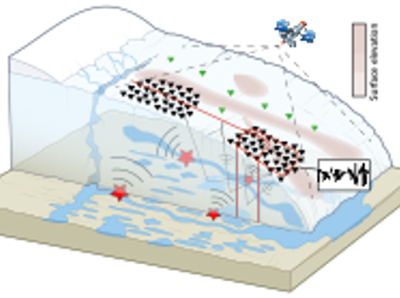Florent Gimbert is awarded ERC Consolidator 2023 grant
Every year, the European Research Council (ERC) funds projects on ambitious and risky subjects by scientists in the early stages of their careers through its "ERC Consolidator Grants". These grants support research projects addressing innovative issues not previously addressed.
Florent Gimbert, CNRS research fellow at IGE, has been awarded an ERC Consolidator Grant 2023 for his REASSESS project.
REASSESS : Probing and predicting the dynamical response of the Greenland Ice Sheet to surface melt water
The Greenland ice sheet exerts a dominant control on sea level rise. By lubricating the interface between the ice and the underlying bedrock, surface meltwater can increase ice flow velocity and thus play a major role in future ice loss. Studies at the source of IPCC’s conclusions on this subject consider that basal lubrication is dictated by the volume of water, but our recent findings show otherwise. Basal lubrication is in fact largely controlled by surface slope and basal velocity, two key variables that are neglected in current models despite their potential to radically change the contribution of the Greenland ice sheet to sea-level rise over the coming decades to centuries.
The REASSESS project aims to understand how the surface slope and basal velocity of Greenland glaciers control the physics of subglacial hydrology, and to what extent and on what timescale this affects the evolution of the ice sheet. REASSESS will answer these questions through two objectives : the first is to acquire unique, multi-scale observations of the key components of subglacial hydrology (drainage, storage and connectivity) using new seismic and geodetic methods (see attached Figure) ; the second is to incorporate these new observations into a hierarchy of models that can represent the physics involved, and thus, for the first time, fully assess the impact of meltwater during past deglaciations or those predicted for the decades and centuries to come.

 The federation
The federation Intranet
Intranet







